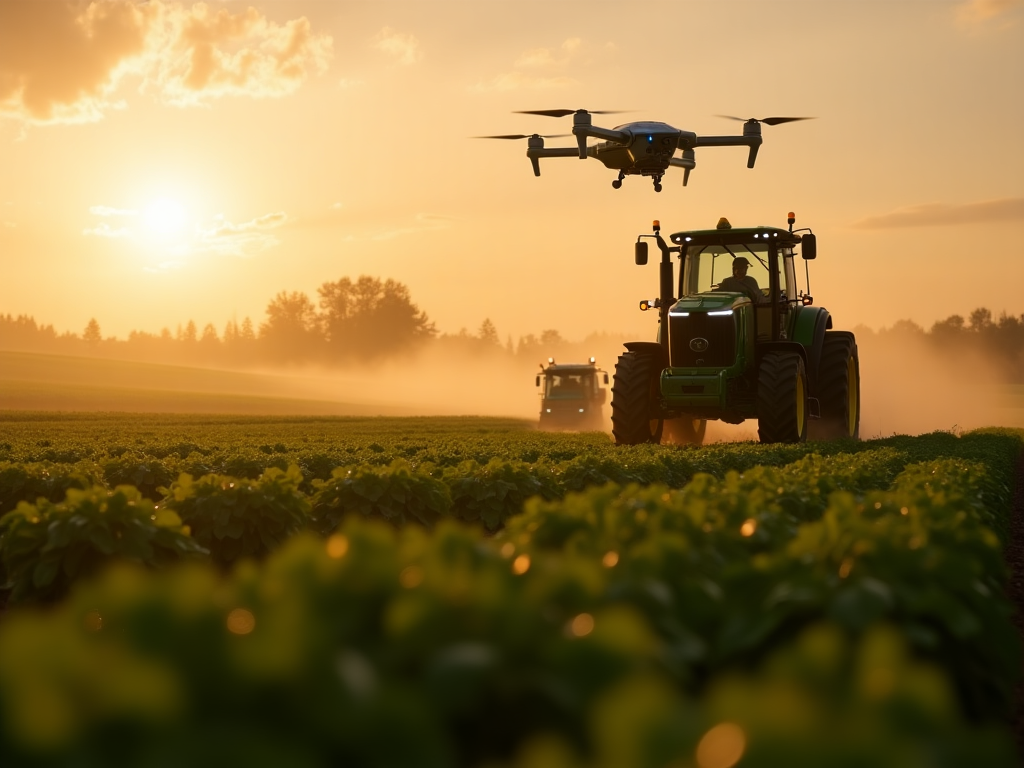
Imagine, a flock of drones flies across a soybean field in Iowa and takes thermal images of every plant. Simultaneously, an autonomous tractor corrects its course on the fly, so it does not enter wet areas that may compact the earth. This would have been unheard of a couple of years ago, and would sound like science fiction. On a contemporary farm it is simply another Tuesday.
ChatGPT and deepfakes have been driving headlines in the world of technology, but artificial intelligence is at one and silently revolutionizing one of the oldest sectors in human history; the agricultural sector. Stakes never could be higher. As the world population is projected to reach 9.7 billion people by 2050, farms have to deliver 60 percent more food produced on about the same amount of acreage. It may be only through AI that it is possible to pull that off.
AI Farming is Rising: Sci-Fi to Soil
The days of guess work and stomach feelings are gone. Farms these days operate on data–a lot of it. The use of AI-powered systems helps analyze satellite imagery, soil sensors and weather patterns to make one millisecond decisions where a season of trial and error was required.
Take the example of John Deere See & Spray system. These intelligent sprayers incorporate the use of computer vision to determine between crops and weeds, and completely reduce herbicide usage by up to 90 percent. Not only is that environment friendly, but it saves the farmer $30 per acre on chemicals. In the meantime, other companies, such as FarmWise, have rolled out robotic weeders, to pull invasive weeds using laser-level precision, cutting the amount of labor by half in lettuce fields.
But what’s the twist, drones can accomplish what human beings cannot.
- Case illustration: In California Central Valley, the stress in crop is detected via drones fitted with multispectral cameras 2 weeks prior to the human eye.
- Data Point: The market with AI in agriculture is going crazy- it is estimated that the market will reach $4.7 billion by 2028 (Bloomberg Intelligence).
The point is not whether AI will transform farming-it has changed already. The real question arises; Who will be left behind? Dr. Sarah Mock- an Agricultural Economist
Real-World Wins (And the Harsh Realities)
All farms are not enjoying the fruits of equal measure. Corporate agribusinesses are spending millions on AI as small family farms are not able to afford the same.
Case Study: The Strawberry Robot That Outworks Humans
In Florida, a Florida-based startup Harvest CROO Robotics made a machine that can harvest 25,000 strawberries a day compared to an 800 made by a human worker. To large berry producers, that is a no brainer. However, the upgrade would cost around a half a million dollars per machine and most small farms can not afford it.
The Labor Crisis That Nobody is Speaking Of
- By 2030, the U.S. will be experiencing a deficit of farmworkers totalling 2.4 million (USDA).
- AI has the opportunity to fill the gap but at what cost? According to a study by Oxford in 2023, there is a projection that 50 percent of farm occupations will be lost within the year 2035.
Expert Insight:
AI will not only substitute the workforce, but it will also change the meaning of farming itself. Data Scientists may be the farmers of tomorrow. — James Rogers, CEO of Iron Ox (AI enhanced indoor farms)
The Dark Side of Smart Farming
AI in the farming industry does not have all good news.
Data Monopoly By Big Ag
His AI-enabled deere tractors not only plow the soil, but gather terabytes of data about the health of the soil and the harvest and weather conditions. Whose data is that? As it stands, farmers contract it back to Deere under subscription arrangements, leading to lawsuits concerning data rights.
The Energy Dilemma
Agricultural AI model training is not all that sustainable. An MIT study of 2024 concluded that one single large-scale farm AI system could be using as much energy as using 120 houses in a full year.
Rhetorical Question: “Does AI farming consume water and burn fossil fuel thus non-sustainable?
What’s Next? AI in Farming of the Future
The innovation that is next is already emerging:
- Vertical AI Farms: The likes of Plenty are able to produce 350 x more food on an acre of land using AI-designed LED lighting.
- Gene Editing + AI = Super Crops: Machine learning accelerates seed generation Startups, such as Benson Hill Inc. cut field research and development (R&D) in half.
The greatest barrier? Consumer trust. A 2024 Pew research poll revealed that 60 percent of Americans are not comfortable purchasing AI-grown food.
Final Thought: A Fork in the Field
The agriculture AI is not about increasing outputs only, rather it is about who owns the future of food. Will there be a squeezing out of small farmers? Is it possible to make the tools of the AI cheap without giving all of the information to Big Ag?
The future farms will not simply be raising crops as one thing is sure. They will develop doubts of character, of money and of life itself.
So how about it?
- Would you like a robot to cultivate your groceries?
- Is AI farming just like GMOs to be regulated?
Leave your ideas below. We are only beginning to talk.
